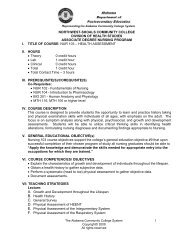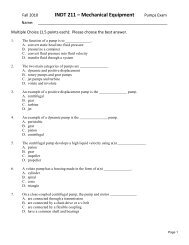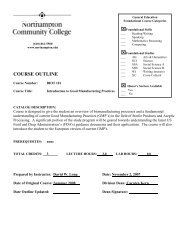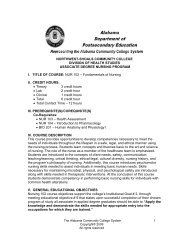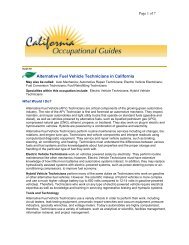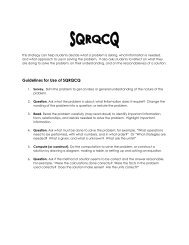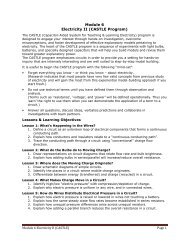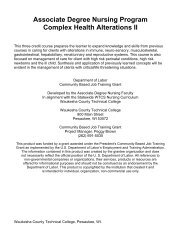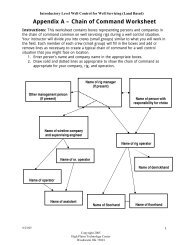7. What property of matter is utilized by the red alcohol contained in the thermometer thatmakes it possible to measure temperature changes?8. Why were the freezing <strong>and</strong> boiling points chosen as the fixed points for establishingtemperature scales?9. Using the conversion formulas, find the Fahrenheit temperature corresponding to 20 °C,40 °C <strong>and</strong> 0 °C. Find the Celsius equivalent corresponding to 90 °F, 0 °F <strong>and</strong> 62 °F.How does a Heat Sink Work?( www.overclock.net/faqs/115016-info-how-does-heatsink-work.html)A heat sink (or heatsink) absorbs <strong>and</strong>dissipates heat from another object usingthermal contact (either direct or radiant).Heat sinks are used in a wide range ofapplications wherever efficient heatdissipation is required; major examplesinclude refrigeration <strong>and</strong> coolingelectronic devices.A "sink" is also a concept in science: ifyou want to say that there is a drain or away out for something, you might call it a"sink." You might have a sink forelectrons or a sink for heat.How it WorksUnderst<strong>and</strong>ing what heat isComputer CPU Heat Sink with Fan <strong>and</strong> smallerheat sink.Heat is in fact molecular vibrations in any substance. The hotter something is, the more themolecules in that substance vibrate. Temperature is a measurement of these tiny vibrations.The more vigorous the vibrations, the higher the temperature.How heat is transferredHeat is transferred because when a particle vibrates, it stimulates the particles beside it tovibrate. Think of this as holding a piece of rope at one end <strong>and</strong> shaking it. If you wave it inthe air, the rope will likely move all over. If the rope is on the ground, it will likely move alot less. Think of this as an example of particles stimulating neighboring particles, which isheat transfer, <strong>and</strong> also as an example of thermal resistance, which is what makes somematerials good at conducting heat, such as copper, <strong>and</strong> some materials bad at conductingheat, such as plastic.Thermally bonding the Heatsink <strong>and</strong> ComponentNow we know the basics of heat transfer, <strong>and</strong> thermal resistance, how can we translate thisinto how a heatsink works?<strong>Module</strong> 4 Student Guide <strong>Fluids</strong> & <strong>Thermodynamics</strong> Page 28
Well lets overview the set up so far. We have a CPU or other heat generating component,<strong>and</strong> a block of metal with low thermal resistance. The problem now is how do we efficientlytransfer this heat from the component to the heat sink?The answer is thermal compound, or Thermal Interface Material (TIM). This is usually apaste like substance with VERY low thermal resistance, <strong>and</strong> is usually made with particles ofsilver. Silver has very low thermal resistance, hence why it is used in TIM's. Also, TIM isdesigned as a paste so that it fills in the microscopic imperfections (Or valleys) on thesurface of the CPU <strong>and</strong> heatsink so that the entire surface of the CPU is thermally bonded(linked to in a way which allows heat to be transferred) to the base of the heatsink.Our setup is almost complete. We have a Heat source (Component of some sort), the TIM,<strong>and</strong> the Heatsink. The dissipation (moving <strong>and</strong> removal) of heat from the component cannow begin. The particles in the component vibrate, causing the particles in the TIM tovibrate. This in turn causes the particles in the heatsink to vibrate.But how does that make the CPU cooler? If more particles are vibrating, surely that meansthe component gets hotter?Every time a vibrating particle causes a neighboring particle to vibrate, it transfers energy.We know that energy cannot be created from nothing, <strong>and</strong> in the case of a heatsink, theenergy is generated from the power (Voltage <strong>and</strong> Current) being supplied to the componentbeing cooled. When this energy is transferred, the particle causes its neighboring particle tovibrate <strong>and</strong> lose energy. It vibrates less. In fact, this occurs to the point where the particlevibrates near enough as much as it neighboring particle.Within this theory lie the fundamentals to the Heatsinks operation. By spreading the heatacross a large piece of material, we can reduce the temperature of the component.Optimizing the heatsinks designSo we have a block of let’s say copper thermally bonded to a heat producing component.How can we increase the efficiency of this block? Well for a while the block will workreasonably well but there is a problem. Heat is only being spread across the materials.Think of this example. You are buttering a slice of toast. Think of the butter as heat, theknife as the component, producing the heat, <strong>and</strong> the toast as our copper block. We continuespreading butter onto the toast, so what happens? More <strong>and</strong> more butter (heat)accumulates on the toast (copper). This is a problem as the component is now going to gethotter <strong>and</strong> hotter because the copper is heating up with the component.To get rid of this heat of our material, we introduce a way of transferring this heat awayfrom the heatsink. It may be air, or water, or some other substance such as liquid nitrogen.For the sake of argument, we'll look at the most common medium for this application, air.So our job now is to transfer as much heat as possible from the copper to the surroundingair. How do we go about this? Well we know that a larger surface area being cooled is betterso we can turn the copper block into a block with fins to increase the heatsinks contact withthe air surrounding the heatsink.How the heat in the air (or other medium) is moved away from the heatsinkThankfully, physics is on our side in this. As most of you will know, hot air is less dense thancold air, because the vibrating particles cause themselves to be spaced further apart(Because they essentially push their neighboring particles away from them). Because ofthis, the hot air around or copper fins rises up <strong>and</strong> away from the heatsink (EG, a hot airballoon. The balloon is filled with hot air, <strong>and</strong> the balloon rises.) Due to air pressure, cold airfrom underneath is sucked up into the heatsink. Of course you won't actually notice this, as<strong>Module</strong> 4 Student Guide <strong>Fluids</strong> & <strong>Thermodynamics</strong> Page 29



